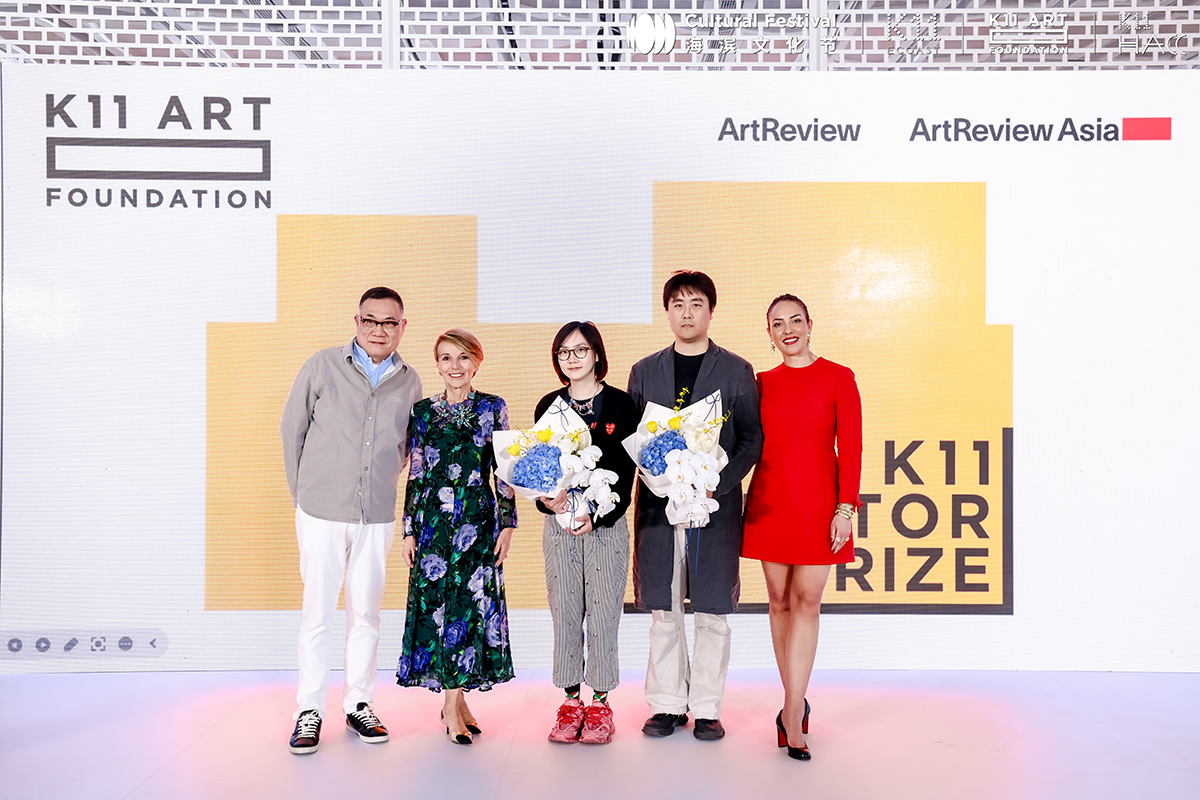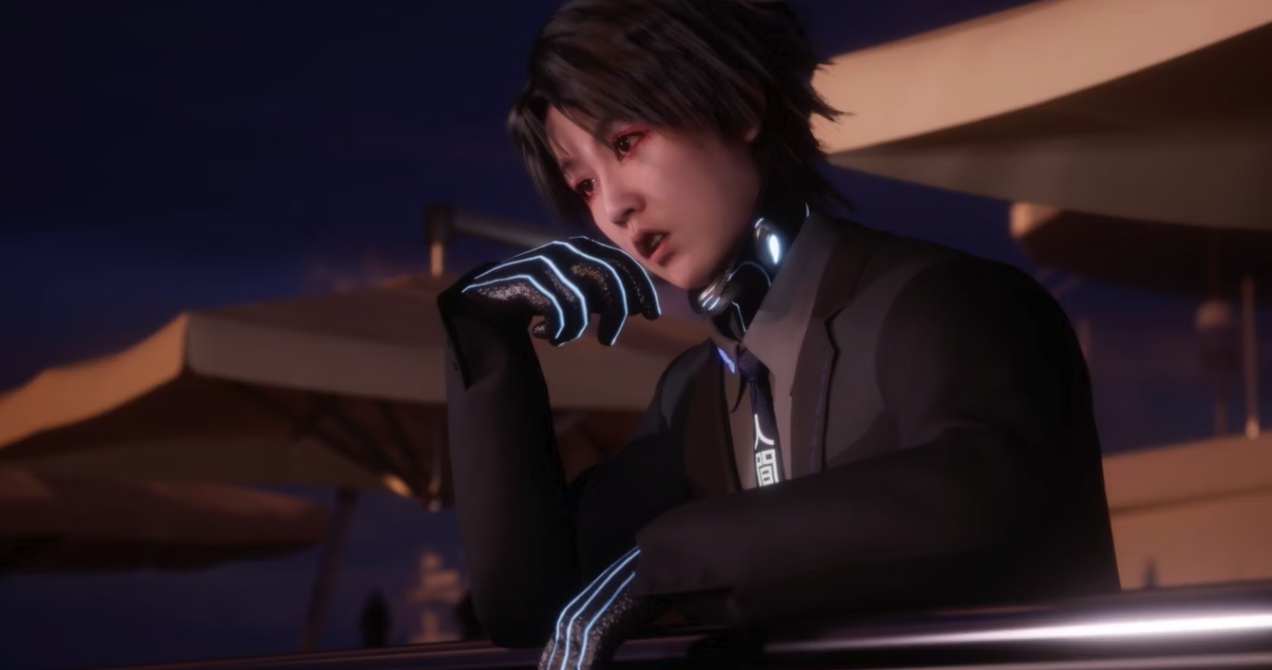ArtReview sat down with Lu Yang, whose DOKU The Flow is the inaugural exhibition, presented by K11 Art Foundation, at K11 Hybrid Art and Cultural Centre (K11 HACC), a new multi-purpose art space in Shenzhen
AR How do you feel about the significance of presenting DOKU The Flow, which reflects on ideas of fluidity and boundaries, at K11 HACC, which is located on the coast?
LY I think the geographical location of K11 HACC in Shenzhen resonates with both the visual setting and symbolic meaning of DOKU The Flow – it’s a coincidence, but also a kind of karmic connection. Over the past few years, many of my ideas have emerged during meditation sessions on coastal cliffs. As a result, the sea and cliffs have become recurring elements throughout the DOKU series.
AR Could you tell us why you think fluidity and transformation are important qualities in our current time?
LY Flow and transformation are fundamental to how phenomena manifest in the universe. Everything appears and disappears according to these dynamics. For me, transformation is not about change in the conventional sense, but a method – a way of navigating experience without falling into binary oppositions. It’s a tool that allows one to guide rather than resist.
AR What kind of immersive environment have you designed for the exhibition? How will it affect the way visitors engage with the work?
LY The spatial design follows a consistent layout, similar to what I presented at the Fondation Louis Vuitton and Mori Art Museum. It’s like a branded store concept. For DOKU The Flow, the installation includes natural elements such as stones, ocean, and vines, creating a textured physicality that echoes the work’s internal logic.
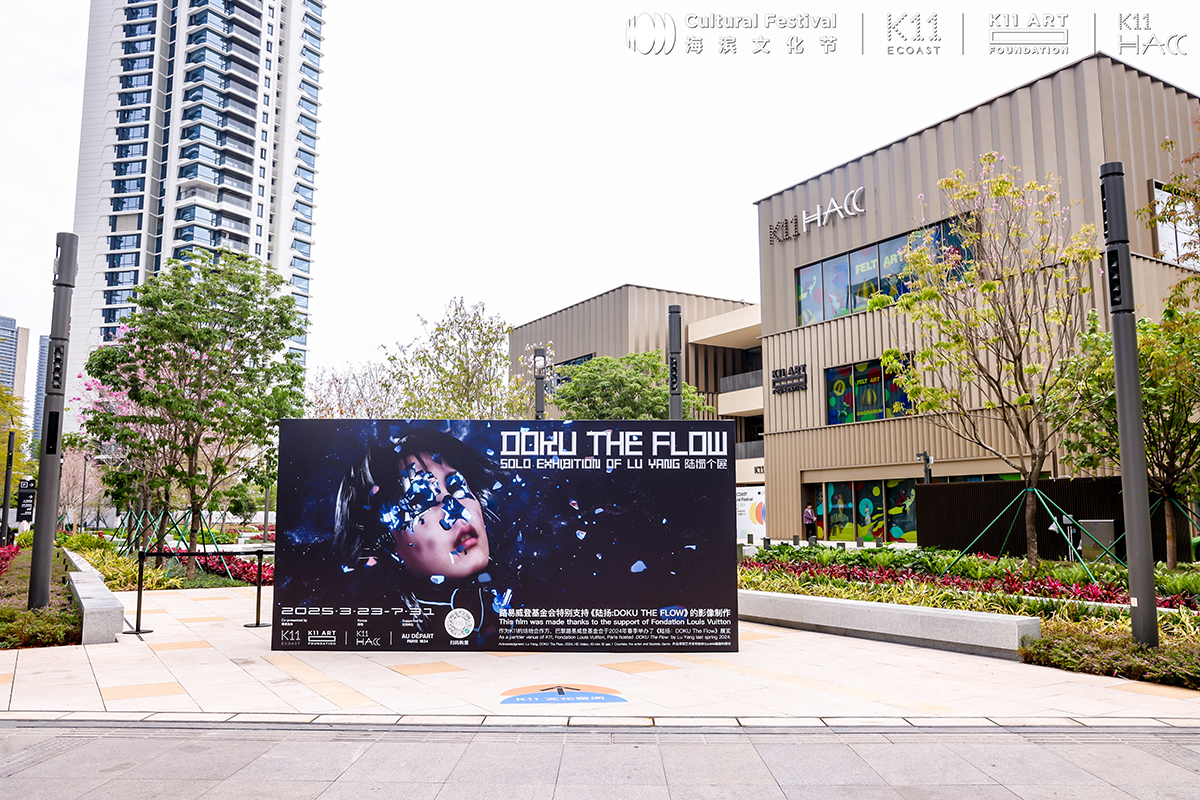
AR How does DOKU The Flow blur the boundaries between the real and digital worlds? Did you come across any challenges in trying to integrate these realms?
LY I’ve never felt a real distinction between the physical world, the digital world, or the dream state. From the perspective of Madhyamaka philosophy in Buddhism, countless lines of reasoning demonstrate that all perceived realities whether so-called actual or virtual – are equally illusory, like a dream or a mirage. I’ve never aimed to separate ‘this world’ from ‘that world’, so there wasn’t really a challenge in merging them.
AR Can you describe some of the philosophical ideas that were foundational in the creation of the character DOKU?
LY At the core of everything is my personal engagement with the wisdom of the Dharma. My understanding of Buddhist philosophy has fundamentally shaped the creation of DOKU.
AR What advanced technologies did you use to create DOKU?
LY I use whatever tools are most effective and time-efficient for achieving the desired result – game engines, 3D technology, AI, and more.
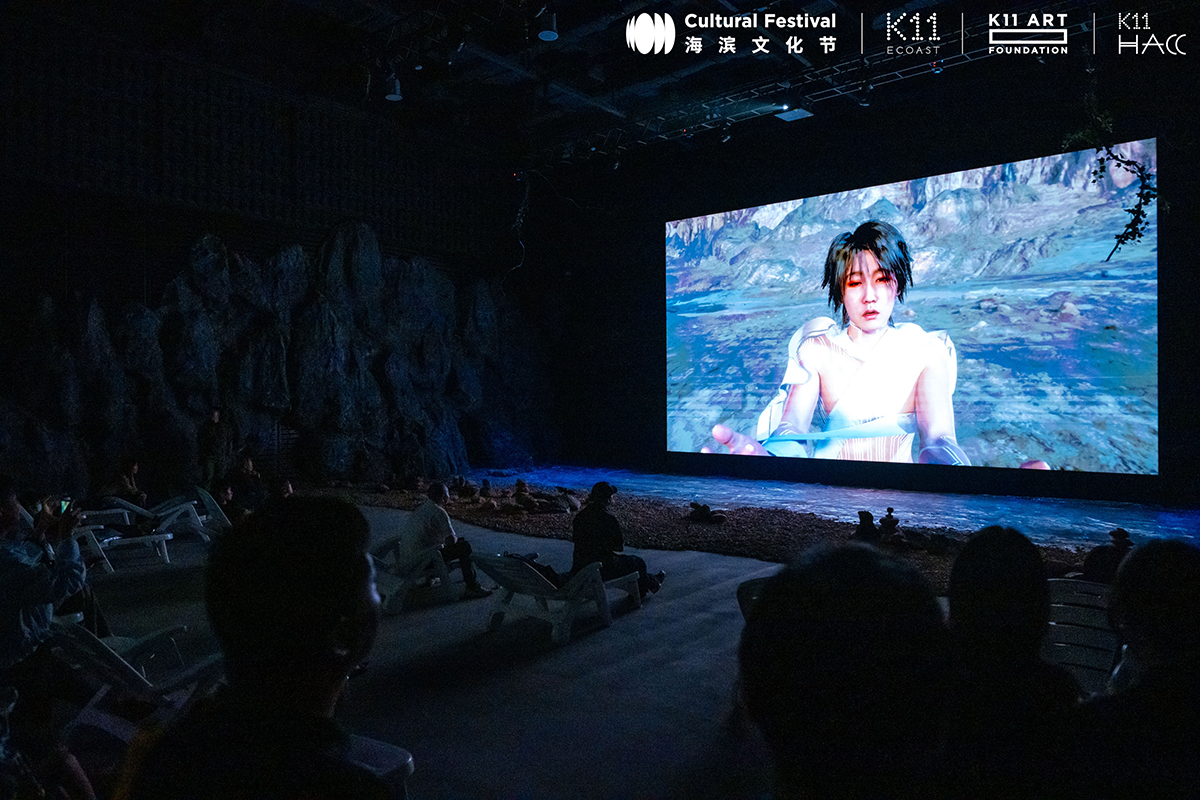
Courtesy K11 Art Foundation
AR Can you tell us about the themes that are explored in this exhibition?
LY The exhibition centres entirely on DOKU The Flow – that’s the sole work being shown. For its themes, I would encourage viewers to engage directly with the work itself.
AR How have the latest developments in imaging technology influenced the evolution of your work?
LY As soon as the technology reaches a point where it becomes usable for me, I incorporate it. There are more tools and methods available now, but they don’t alter the essential core of what I’m trying to express.
AR We’re interested in the phrase dokusho dokushi – we are born alone, we die alone – and how this relates to reincarnation. Do we really die alone if our selfhood is constructed and shaped by our relationships with others in our present and also past lives? For example, if DOKU is continuously reincarnated, isn’t each incarnation of DOKU informed by their past self?
LY DOKU’s name is drawn from the phrase ‘独⽣独死’ (dokusho dokushi), which appears in the Sutra of Infinite Life. It points to the solitary nature of existence – each being is born and dies as an individual. Our arrival and departure are solitary acts that cannot be shared or replaced. Even if surrounded by loved ones, the path into death must be walked alone. This insight underscores personal responsibility, and aligns with the Buddhist doctrine of ‘no-self’, which views the self as a constructed, impermanent phenomenon. Realising this can help loosen the grip of ego and foster greater compassion. DOKU is conceived as a practitioner within a virtual realm, and that is why I chose the name. If we look more deeply, ‘being born alone and dying alone’ is simply a description of our actual condition – no one can substitute your birth or your death. Rebirth and liberation are, in essence, non-dual; similarly, solitude and connection do not have fixed or substantial existence.
AR In creating DOKU as a digital extension of your soul, what was one of the most surprising or unexpected thing you discovered about yourself?
LY While working on the DOKU project, I often forgot myself. Most of the time, I was in a state of flow – immersed, selfless. Perhaps in those moments, I handed over my sense of self to DOKU’s world of emptiness.
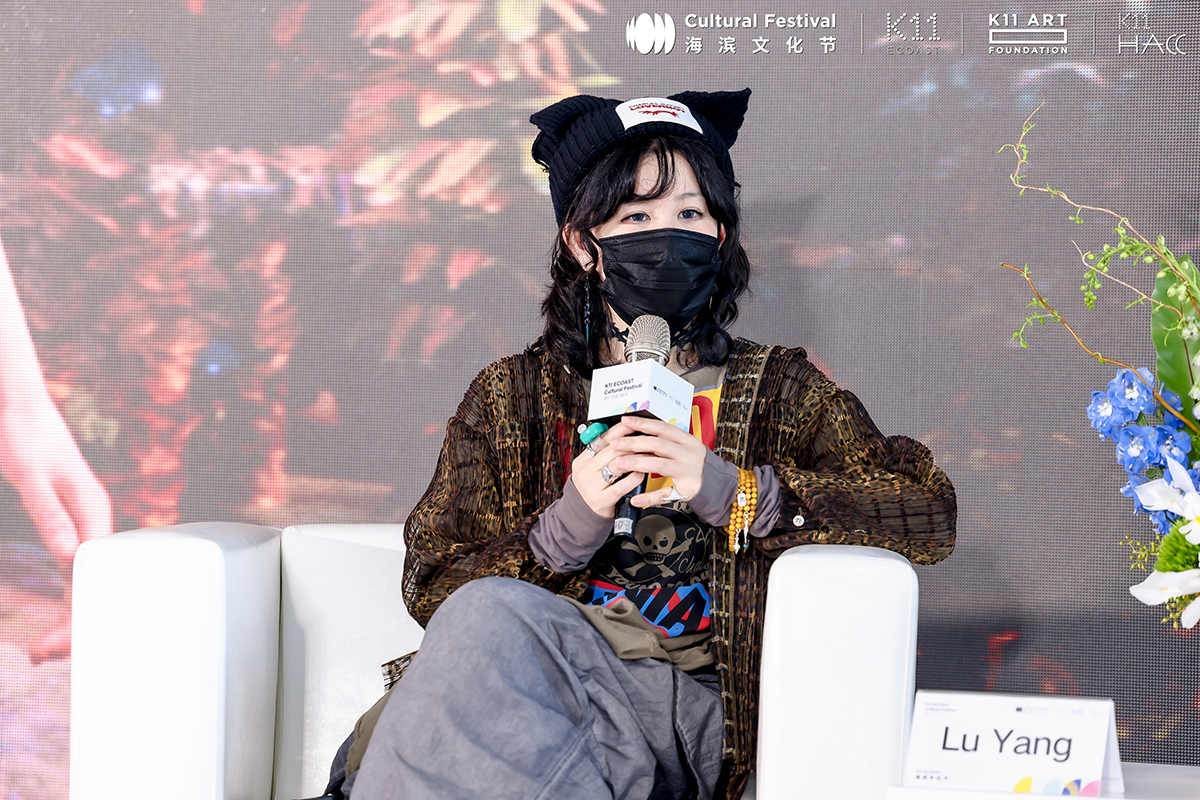
Courtesy K11 Art Foundation
About K11 HACC and the Inaugural K11 Curator Prize
Designed by David Chipperfield Architects, K11 HACC will function as a retail space as well as a museum and a cultural centre, bringing together exhibitions, performances, public education and other cultural programmes that aims to bridge the international art scene and Shenzhen’s local life while contributing to a diverse cultural dialogue in the greater Bay Area.
K11 HACC forms a part of K11 ECOAST Art and Cultural District by the Sea – the first of K11’s flagship projects in China’s Mainland that spans 228,500 sqm of Shenzhen’s coast. ECOAST is named to reflect its dedication towards green economy and the conservation of waterfront resources, and encompasses cultural retail landmark K11 ECOAST, multi-purpose art space K11 HACC, next-generation workspace K11 ATELIER as well as a seaside Promenade.
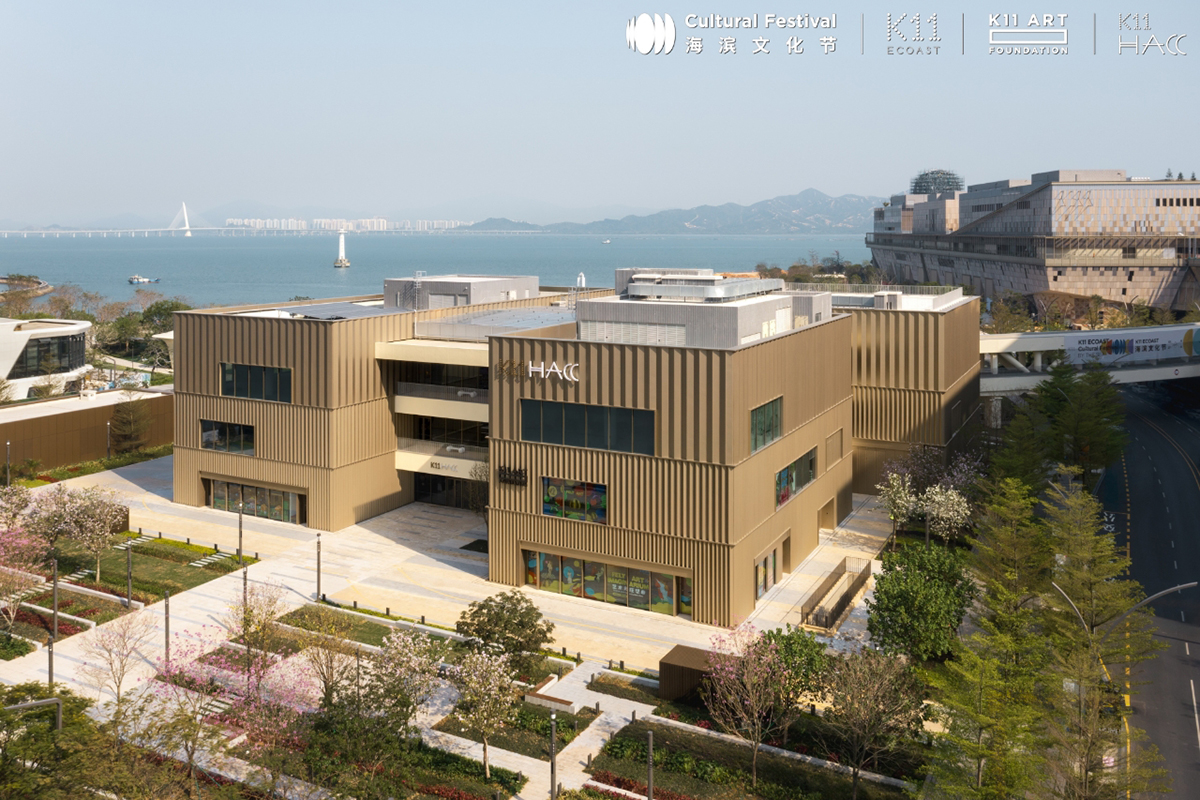
During Hong Kong art week K11 HACC has also announced of the winner of its inaugural K11 Curator Prize, a prestigious award established to celebrate exceptional curatorial talent in Asia. This year, the award has been presented to the emerging curator collective Li Hanwei and Miao Zijin, in recognition of their innovative curatorial approach.
Li, a graduate of the Shanghai Institute of Visual Arts, and Miao, who holds an MFA in Curating from Goldsmiths, University of London, were selected for their distinctive ability to integrate technology with curatorial practice, by exploring the impact of technology on human perception. With the support of the K11 Art Foundation International Council, they aim to push the boundaries of contemporary art and pioneer new curatorial practices at the intersection of art and technology.
